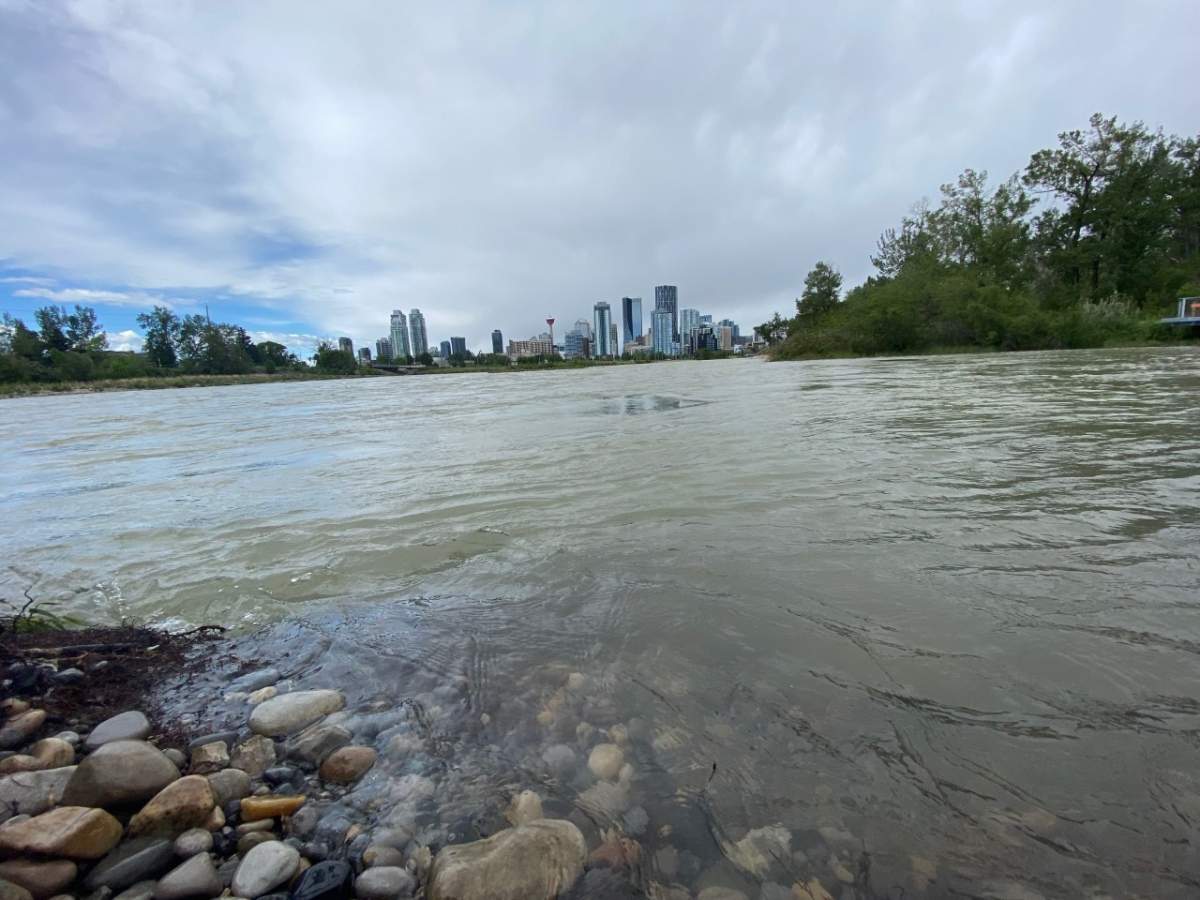How Calgary’s utilities are performing isn’t a headline issue for voters going to the polls this month, with the pandemic and economic recovery at top of mind. But when it affects what does or doesn’t come out of the taps, Calgarians are sure to pay attention.

“Calgary is actually a relatively large city on two small rivers,” said Harpreet Sandhu, leader of watershed strategy.
Those rivers are fed by rain and snow in the watershed of the foothills and mountains west of Calgary. But trends affecting the rivers are “fundamentally changing” how and when the city receives water.
“We know that the mountain snowpack has been melting earlier in the year. We do have longer, hotter and drier summers,” Sandhu said.
“And we also know that when we do get storms, it will be more intense and that affects definitely river flooding, but also the pattern of when and how we receive water is changing.”
Sandhu says these changes are due to climate change.
Calgarians can expect to have to change their water use next decade, according to the city’s water security report released last year.
“The City will not be able to provide the full amount of water demanded on a peak day by customers by the mid-2030s,” the report says.
Sandhu says the city’s water licence issued by the province limits how much it can withdraw from the Bow and Elbow rivers, and the city has to balance the demand from citizens. When paired with changing precipitation patterns that feed the rivers, the city’s ability to supply water to taps will be challenged.

Sandhu said the city has made strides to lower water consumption and is working to finalize a citywide drought management plan.
That plan will have to be approved by the next city council, as the 15 councillors and mayor continue to consider climate change and resiliency.

Get daily National news
“I think a lot of these questions about climate change and our changing water supply are going to be top of mind,” Sandhu told Global News. The extreme heat of last summer, particularly the heat wave in June, caught people’s attention, she said.
It’s one of many climate change-related issues that city council will face.
“There’s two main areas of climate policy that the city, or just governments, in general, can pursue: adaptation … and mitigation,” Robert Tremblay with the Calgary Climate Hub told Global News.
Mitigation involves reducing emissions and adaptation involves managing the risks from climate change.
Calgary city council unanimously approved the Climate Resiliency Strategy in 2018, with a top-line goal of reducing 80 per cent of 2005 City of Calgary emissions by 2050. Adaptation and mitigation strategies are included in the strategy.
This election, Tremblay and the Climate Hub are advocating for the city to adopt a net-zero goal by 2050.
“That really is just context for all of the city’s climate action.”
The non-profit’s election platform is calling for other measures, like doubling the city’s tree canopy, building out the Green Line and improving transit, increasing the city’s EV charging network, and having Enmax adopt more aggressive emission reduction goals.
Tremblay said that while most climate policy is set at the federal or provincial level, in the absence of action from either, cities can step in.

“The city, as a local government, has the most direct interaction with people, right?”
The city has already been impacted by severe weather events and disasters, like the 2013 flood or 2020 billion-dollar hailstorm.
But the more extreme weather can threaten other parts of the city’s infrastructure.
Tremblay pointed to the slow-moving polar vortex and stubborn heat dome, both of which affected Calgary in the last year. Both put high loads on the electricity grid. In June and July, the Alberta Electric System Operator issued alerts.
“We need to get used to new extremes and make sure that our infrastructure holds up,” said Tremblay, pointing to structural failures in electrical systems in Texas and the Pacific Northwest this past year.
Calgary’s placement on the Bow and Elbow rivers gives the city both an advantage and a responsibility, Sandhu said.
“We’re fortunate: we’re situated so close to the mountains,” the watershed strategist said. “We are a great place to invest because we have that water supply.
“But looking ahead, we have to make sure that we make the right decisions and right investments to ensure we have water security for future generations.”








Comments